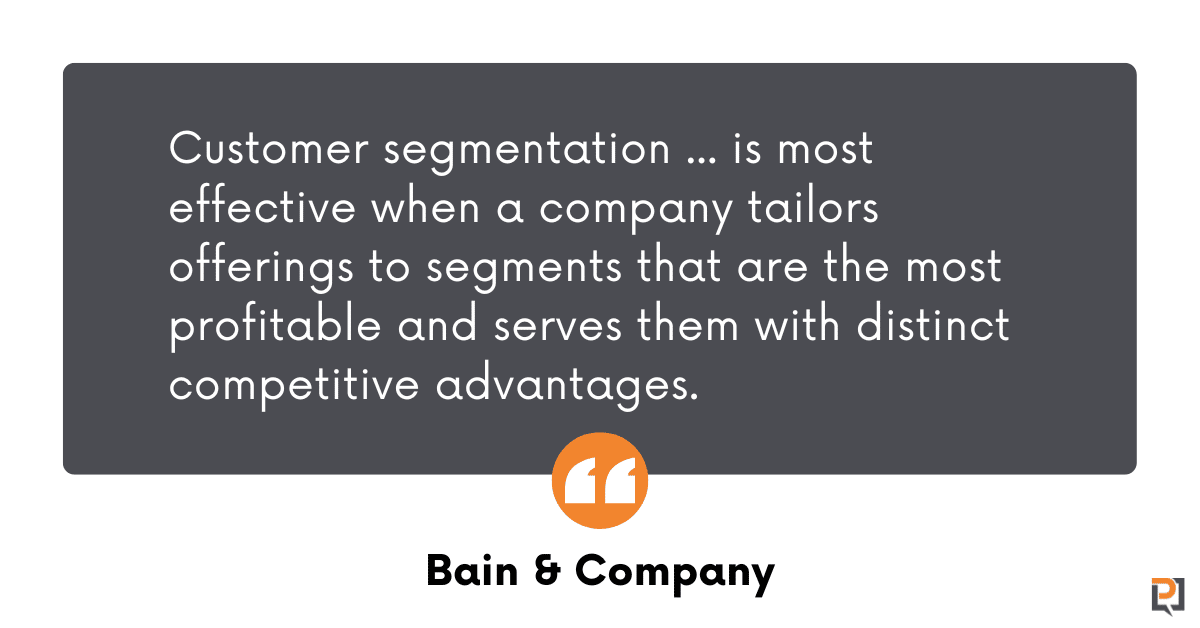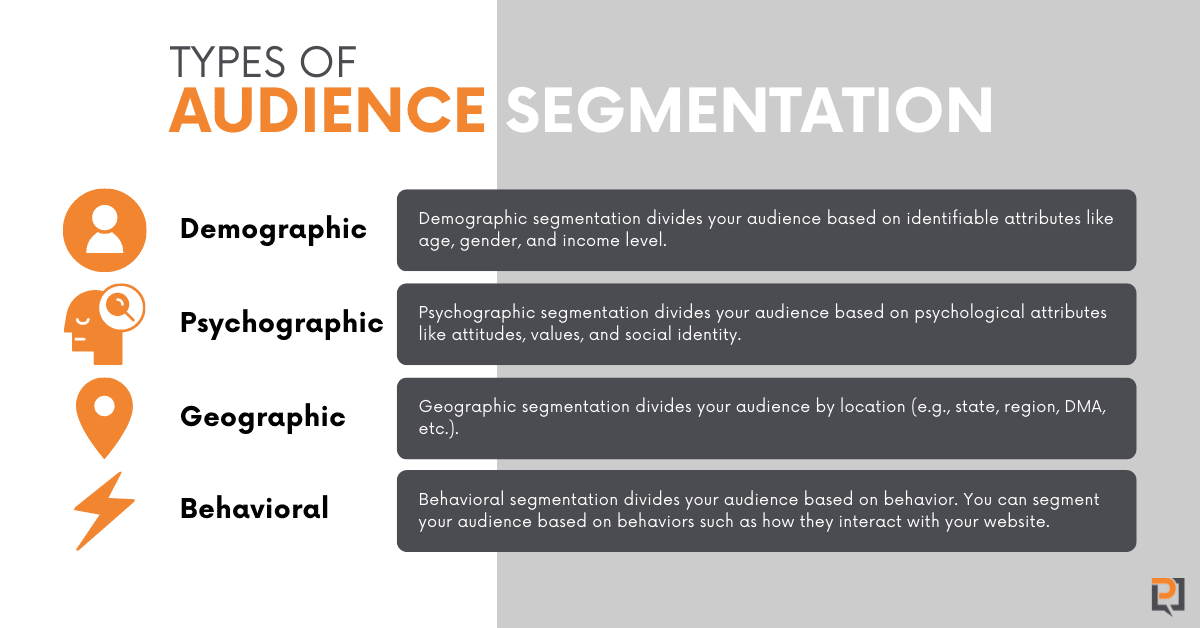How to Collect Audience Segmentation Data
Audience segmentation, the process of splitting your audience into groups based on shared attributes, is an essential component of your marketing strategy. In 2020, sixty-eight percent of eCommerce marketers in the US and the UK reported that they were using real-time behavioral segmentation and more traditional, static segments.
It’s important not to fall behind in this area because a substantial group of consumers is willing to switch brands if another does a better job with personalization.

It’s easy to see why. When you understand your audience, it informs how you approach everything from email marketing to digital advertising and beyond. But how do you collect the data you need to segment shoppers effectively?
In this article, we’ll break down the different ways you can segment your audience and explain how to get the data you need to do it.
Types of Customer Segmentation
There are four categories of attributes that eCommerce marketers use to segment their customers:
- Demographic. Demographic segmentation divides your audience based on identifiable attributes like age, gender, and income level.
- Psychographic. Psychographic segmentation divides your audience based on psychological attributes like attitudes, values, and social identity.
- Geographic. Geographic segmentation divides your audience by location (e.g., state, region, DMA, etc.).
- Behavioral. Behavioral segmentation divides your audience based on behavior. You can segment your audience based on behaviors like how they interact with your website, how they use products like yours, and the events they attend.
All of these categories should influence your marketing approach. Each offers valuable insight on its own, but to get the full benefit of audience segmentation, you should use them all.

The Benefits of Audience Segmentation
Audience segmentation allows marketers to group their traffic based on the needs of each customer. Having customers divided into groups enables focused campaigns that deliver information and incentives that are more relevant to the target audiences than, for example, a generic ad or email.
This capability is helpful because, depending on a customer’s interests and stage of the buying process, different messages will resonate with different people.
For instance, a website visitor who is using an eCommerce site for entertainment may not be as interested in a discount as another visitor who has put an item in their cart before going to look for a lower price elsewhere.
But that’s not all. As Bain & Company points out, businesses “that identify underserved segments can then outperform the competition by developing uniquely appealing products and services.”
How to Segment Your Customers
The biggest roadblock to effective audience segmentation is usually data collection. Your number one goal is to generate sales, so when a shopper is filling out a form to receive an incentive or complete a purchase, you don’t want to include more fields than are necessary.
Unfortunately, that leaves many eCommerce marketers without the data they need to segment their audiences for effective ad targeting and personalization. Some companies will supplement your data for a fee, but data enrichment can be expensive.
But there are affordable ways to collect more data on your shoppers (some of them don’t even require a form submission).
Collect Demographic and Geographic Data
Collecting demographic and geographic data is as simple as placing a short line of code on your website to enable website visitor identification.
Website visitor identification technology matches your website visitors with records in a large database and provides you with more information on the visitor. All you have to do is place a short line of code on your website, and then you can collect demographic information like:
- email address
- mailing address
- phone number
- automotive data
- household income range
- age range
- education level
- gender
- homeowner status
- length of residence range
- net worth range
- marital status
- presence of children
Depending on the company you choose and the data you request, the platform will send the contact record to your CRM for as little as $0.25 a record.
(If you want to give it a try, LeadPost is currently offering a free trial to new users.)
How to Collect Behavioral Data
The most accessible behavioral data is your customers’ digital activity.
For example:
- The channel through which they discovered your brand (e.g., organic or paid social)
- The type of content they prefer to interact with (e.g., text vs. video)
- What products they viewed on your website
You can track shoppers with site tracking software like HubSpot or ActiveCampaign. Like website visitor identification, site tracking relies on a line of code on your website to track your visitors. The software enables you to see website behavior like what content a visitor interacts with on your site, how long they spend engaging with that content, and how often they view the content.
By combining site tracking with website visitor identification software, you’ll have a deep understanding of each customer in your CRM.
How to Collect Psychographic Data
Psychographic data is the most challenging type of customer segmentation data to capture.
The primary sub-categories of psychographic data are:
- Personality
- Attitude
- Status
- Lifestyle
This data is less accessible than data in other categories for two reasons. First, it’s in the shopper’s mind. There’s no way to get it other than asking them for it. Second, before you can ask someone to share this information with you, you have to figure out what to ask.
How to Ask
If you use software like HubSpot or ActiveCampaign for site tracking, you can also utilize their form functionality to collect psychographic data through a survey. Otherwise, free tools like SurveyMonkey, Google Forms, or JotForm will do the job.
What to Ask
Websites like QuestionPro provide free survey templates with questions regarding attitudes, values, and other psychographic information. They also provide software that you can use to build and deliver surveys.
They have a free plan that includes unlimited surveys with 1,000 responses each.
Segment Your Customers and Improve Your eCommerce Marketing Performance
Many marketers neglect to segment their audience segmentation. The ones who do segment their customers tend to rely on basic segments that offer limited value. That presents an opportunity to gain a competitive advantage. Start collecting the data you need to implement more comprehensive audience segmentation and get a leg up on your competitors.

